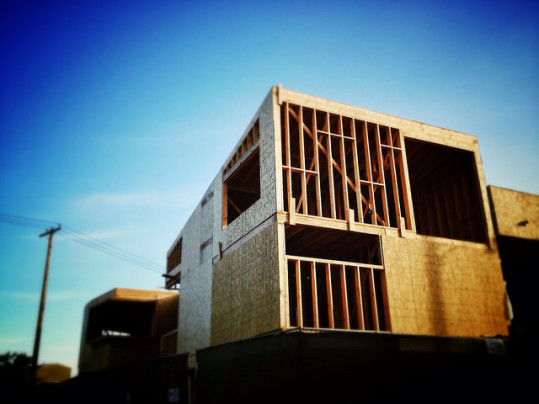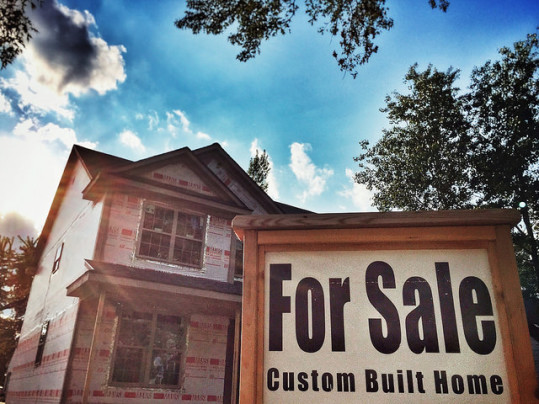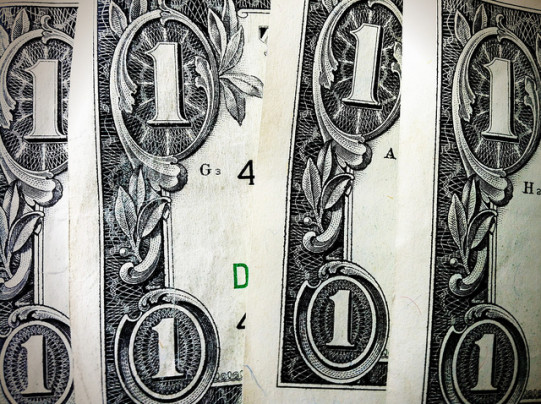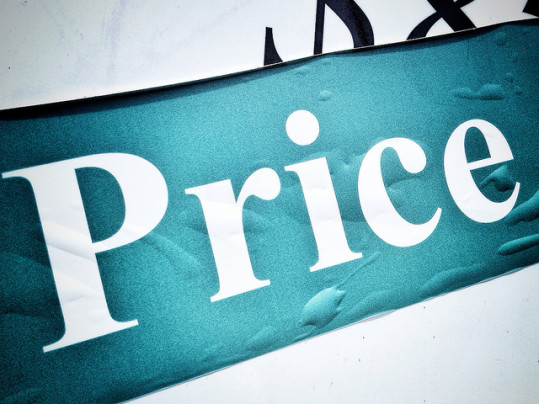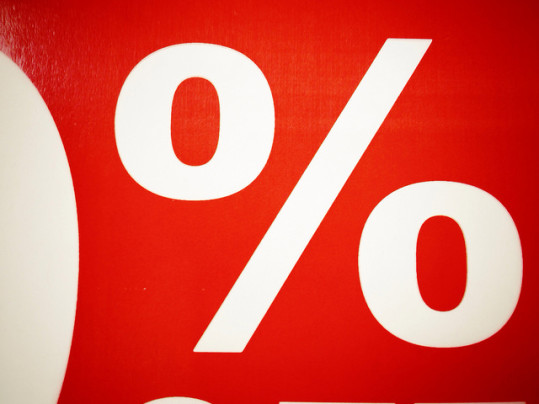New estimates released by the U.S. Census Bureau and the Department of Housing and Urban Development show construction of new single-family homes spiked in July, rising 12.8 percent above June’s figure. Housing starts have now been above a one million-unit pace for fourth straight months. After years when new-home construction lagged behind other economic indicators, housing starts are now at their highest level since October 2007. The improvement adds to a number of upbeat economic reports released recently that indicate the economy and housing market have started the third quarter on a strong note. But despite the gains, the number of permits to build new homes – which are generally a good indicator of future construction activity – fell 1.9 percent from the month before. Still, industry analysts believe the decline will only be temporary, as permits have seen many months of increases and builder confidence reached a 10-year high in August. Regionally, single-family home building hit a 7-year high in the South but fell 27.5 percent in the Northeast due to expiring tax incentives. More here.
Archive for August 2015
Cost Of Renting Hits All-Time High
If you’re weighing whether to buy or rent your next home, some newly released numbers may influence your decision. That’s because a new analysis shows rent is more expensive than it has ever been. In fact, renters can now expect to spend 30.2 percent of their monthly income on rent. Typically, 30 percent is what economists say is an acceptable share of monthly income to spend on housing. And, though it is still within range, rent has historically been cheaper. A look at records dating back to 1979 shows renters paying closer to 24 percent of their income on average. But how does renting compare to buying in today’s market? Well, according to this analysis, a typical buyer can expect to pay just 15.1 percent of their monthly income toward their mortgage payment, which is significantly less than the historical average of 21.3 percent. That means, buying a home is still cheaper than renting in most markets and is also more affordable than it has been compared to years’ past. In other words, now is a good time to buy a home and it will continue to be as long as rents continue to climb. More here.
Builders Confident In Market For New Homes
Builders have an unique perspective on the market for newly built, single-family homes. Because of this, the National Association of Home Builders surveys them monthly in order to gauge their feelings about how the market is doing. The NAHB’s Housing Market Index measures builders’ responses on a scale where any number above 50 indicates more builders view conditions as good than poor. In August, the index rose one point to a level of 61. It was the highest reading since November 2005. David Crowe, NAHB’s chief economist, says the report is in line with the group’s forecast for the year. “Today’s report is consistent with our forecast for a gradual strengthening of the single-family housing sector in 2015,” Crowe said. “Job and economic gains should keep the market moving forward at a modest pace throughout the rest of the year.” Of the index’s three individual components, two improved over last month. The index measuring buyer traffic was up two points to 45, while the component gauging current sales conditions rose one point to 66. Sales expectations for the next six months remained high but unchanged from the month before at 70. More here.
Mortgage Credit Availability Improves
The Mortgage Credit Availability Index – a monthly report from the Mortgage Bankers Association – tracks whether lending standards are becoming looser or more restrictive. In July, the index increased 2.9 percent, indicating that mortgage credit is becoming more available. “Credit availability increased in July, mainly driven by higher-balance loan programs,” MBA’s chief economist, Mike Fratantoni, said. “Many investors are fine tuning their cash-out refinance requirements to meet increasing borrower demand for home equity financing. Some investors increased the availability of low down payment loans.” Among the four loan types tracked by the index – conventional, jumbo, government, and conforming – the conventional MCAI saw the greatest loosening, according to the report. In fact, the index component tracking conventional loans increased 5.2 percent from the month before. Jumbo loans saw a 4.7 percent increase, while the government and conforming indices both rose less than 1 percent. Following the housing crisis, lending standards became more restrictive and mortgage credit was harder to obtain. Over the past few years, however, standards have normalized somewhat and financing has become more available. More here.
Home Prices Lead Market Rebound
An analysis of how quickly home prices, building permits, and employment levels have returned to normal following the housing crisis has found that home prices have rebounded the fastest. The National Association of Home Builders Leading Markets Index looks at housing markets across the country and evaluates whether or not certain economic and housing indicators have returned to or exceeded their last normal levels of activity. According to the most recent results, nearly all of the 360 metropolitan areas included in the index have seen home prices return to normal. “Of the three elements in the LMI (house prices, permits, and employment), house prices have had the broadest recovery, with 345 markets returning to or exceeding their last normal level,” NAHB’s chief economist, David Crowe, said. “Meanwhile, 64 markets have met or exceeded their normal employment levels. The housing permit level has made the least progress toward normality, with only 26 markets at or above their last normal level.” Overall, the index found the nationwide housing market operating at 92 percent of normal economic and housing activity, with 66 percent of individual markets showing improvement over last year. More here.
Mortgage Rates Mostly Flat Last Week
According to the Mortgage Bankers Association’s Weekly Applications Survey, mortgage rates for 30-year fixed-rate loans with conforming and jumbo balances were both unchanged last week from the previous week, while rates for loans backed by the Federal Housing Administration and for15-year fixed-rate mortgages increased slightly. Lynn Fisher, MBA’s vice president of research and economics, told CNBC that lower mortgage rates have led to refinance activity picking up recently. “As rates declined over the past few weeks, refinance activity picked up in terms of share and volume in the most recent week’s data,” Fisher said. “The refi share, at 53 percent, was the highest refi share since April and the refi index increased 3.1 percent to reach its highest level since May.” But, though refinance demand increased, purchase demand fell, dropping 3 percent from one week earlier. Still, purchase application demand – which is an important indicator of future home sales – is now 20 percent higher than the same week one year ago. The MBA’s weekly survey has been conducted since 1990 and covers 75 percent of all retail residential mortgage applications. More here.
Gov’t Report Details Real Estate Rebound
Each month, the U.S. Department of Housing and Urban Development releases its Housing Scorecard, which details the market’s progress and the results of the government’s foreclosure prevention and mortgage assistance programs. According to the most recent release, the residential real estate market continues to make significant gains. For example, sales of previously owned homes hit an 8-year high in June, while new home sales have been above a projected annual rate of 500,000 units for four of the first six months of the year. This spring and summer, home sales have benefited from an uptick in the number of first-time home buyers active in the market. In fact, for the past four months, the share of first-time buyers has been at 30 percent or above. The scorecard also details the continuing stabilization of home prices. After many years of volatility, prices seem to have settled into a pace where increases have steadied and home values are hovering between 4 and 5 percent higher than at the same time last year. Foreclosures, on the other hand, have continued to fall, dropping another 4 percent in June. But despite all the encouraging news, the report cautions that there is still more to be done to help foster home sales, help underwater homeowners, and reduce mortgage delinquency rates. More here.
